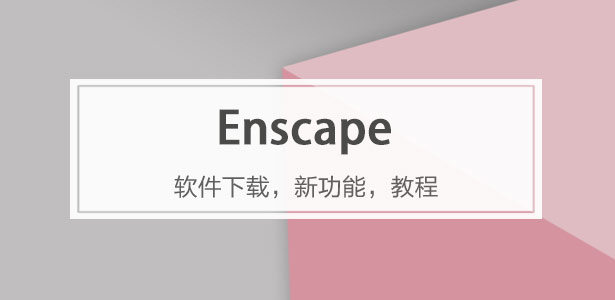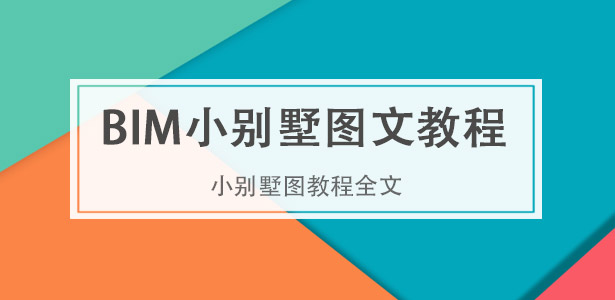* 主體類型
* 企業(yè)名稱
* 信用代碼
* 所在行業(yè)
* 企業(yè)規(guī)模
* 所在職位
* 姓名
* 所在行業(yè)
* 學歷
* 工作性質(zhì)
請先選擇行業(yè)
您還可以選擇以下福利:
行業(yè)福利,領完即止!

下載app免費領取會員



heatherwick建筑事務所設計的曼谷新項目靈感來源于泰國傳統(tǒng)燈籠,賦予了項目新活力
heatherwick studio references thailand's traditional lanterns for new bangkok development
由專筑網(wǎng)韓慧慧,小R編譯
Heatherwick建筑事務所在曼谷首次承接了一個綜合開發(fā)項目,名為Hatai。該項目場地位于曼谷Silom區(qū)Narai酒店的舊址,事務所在場地內(nèi)的設計內(nèi)容有2座新建酒店、1個公共活動廣場、露天活動社區(qū)以及運河修復工程等,使得該場地內(nèi)的功能實現(xiàn)多元化。
場地內(nèi)建筑的設計靈感來源于泰國的傳統(tǒng)燈籠,建筑師將其材質(zhì)和寓意融入到了建筑設計中。建筑整體由多個方形體塊豎向堆疊而成,立面有專門的細節(jié)和紋理,方形體塊邊角為弧形,柔和了建筑形象,其弧形設計也與城市中其它棱角分明的建筑形成鮮明的對比。建筑整體有著豐富的韻律感,與城市中體塊的單調(diào)重復形式形成鮮明對比。
Thomas Heatherwick認為泰國的傳統(tǒng)建筑文化底蘊深厚,但是曼谷城市中的新建現(xiàn)代建筑卻形式單一,并沒有傳承其文化底蘊。所以,Heatherwick建筑事務所將本項目中的建筑設計融入泰國本土傳統(tǒng)文化,實現(xiàn)古與今的對話,為該城市重新注入活力。
Heatherwick Studio reveals the design for Hatai, a mixed-use development in Bangkok, marking the firm’s first project in Thailand. Situated on the site of the original Narai Hotel in the city’s Silom neighborhood, the scheme integrates two new hotels with a public plaza, canal restoration, and open-air community programs.
The architecture draws from the material and symbolic qualities of traditional Thai lanterns. Vertical structures are conceived as stacked volumes, their surfaces textured and articulated to diffuse light and soften the development’s silhouette against the city’s sharp commercial skyline. The composition introduces a layered rhythm that contrasts the blank, repetitive facades common in the area.
‘There’s a richness to Thailand’s culture and historic architecture, but the anonymous, blank severity of many so-called modern buildings in Bangkok does not speak to this at all,’ Thomas Heatherwick explains. ‘We wanted to do something that connects with the country’s heritage in a deeper way and builds detail, feeling and story back into the city.’

▲ Heatherwick建筑事務所首次在泰國承接項目,該項目位于曼谷Silom區(qū) | 圖片由DEVISUAL提供
Heatherwick Studio reveals its first project in Thailand, sited in Bangkok’s Silom district | images © DEVISUAL
Hatai項目內(nèi)部設計有Narai酒店和Six Senses酒店,總共有300多間客房。內(nèi)部的配套設施有康復中心、宴會廳和會議廳等。建筑上部通透性較強,使其具有較強的光影感和輕盈感。緊臨底層部分功能設計的較為多元化,是為了與周邊的街區(qū)產(chǎn)生緊密的聯(lián)系。
建筑底層主要為公共活動功能,利于增加人與人之間的互動性。在場地上設計有寬闊的廣場,廣場上方設計有遮陽棚,其上攀爬植物,點綴建筑的同時可以改變棚下的微氣候。場地內(nèi)原有一條運河,后被填埋,運河經(jīng)過修復,為場地內(nèi)增添水景,也為快節(jié)奏的城市生活提供一處冥想的地方。
場地內(nèi)的公共區(qū)域還設計有神社、活動區(qū)域、托兒所和傳統(tǒng)的露天市場等。這些設計功能遵循了Heatherwick事務所的設計理念,即將市政基礎設施融入到開發(fā)項目的場地中,使得該項目不僅有酒店及配套設施,還有一些基礎公共服務設施供人們使用。
Hatai will house both a new Narai Hotel and a Six Senses hotel, totaling over 300 guest rooms. Amenities include a wellness center, ballroom, and conference facilities. The upper volumes are designed to appear light and luminous, while the lower levels are rooted in a denser program of activity that ties into the surrounding street life.
At ground level, the design by Heatherwick Studio prioritizes public access and engagement in Bangkok, Thailand. The open plaza is shaded by a wide canopy structure and interspersed with native planting to create a more temperate microclimate within the dense urban setting. A once-buried canal is set to be restored, reintroducing flowing water into the landscape and offering a contemplative counterpoint to the city’s pace.
Additional elements in the public realm will include a shrine, event space, children’s nursery, and a traditional open-air market. These programs reflect the studio’s intent to embed civic infrastructure within the development, allowing it to serve as more than a hospitality project.

▲ 該項目的設計靈感來源于傳統(tǒng)的泰國燈籠,主要借鑒其工藝美和光影效果
the architecture is inspired by the craft and glow of traditional Thai lanterns
Thomas Heatherwick解釋說在事務所接到這一項目委托時,便對泰國的傳統(tǒng)建筑和文化進行了研究,目的是改變該城市日益同質(zhì)化的現(xiàn)代建筑形式,為人們提供一種新的建筑建造形式。Hatai項目的建造形式借鑒了當?shù)貍鹘y(tǒng)的手工藝,并在此基礎上加入現(xiàn)代的建造技術(shù),使建筑在滿足復雜功能需求的同時,還能對傳統(tǒng)手工藝進行另一種形式的傳承。
場地內(nèi)還設計有空中廊道,能夠?qū)龅嘏c周邊社區(qū)聯(lián)系起來,建筑與建筑之間有著遮陽連廊,豐富人們的步行體驗。該項目規(guī)劃有5200m2的公共活動空間,是一種創(chuàng)新的設計手法,豐富了場地景觀和城市景觀。目前,Hatai項目正在建設中,預計2028年開放使用。
According to Thomas Heatherwick, the studio approaches the commission with sensitivity to Thailand’s architectural heritage, aiming to offer an alternative to the region’s increasingly homogenous high-rise developments. The design of Hatai is shaped by local craft traditions while incorporating new construction methods to support complex mixed-use functions.
A network of elevated walkways will further integrate the site into the surrounding neighborhood, improving pedestrian movement and offering shaded paths between buildings. With 5,200 square meters of new public space, the project is framed as both an architectural gesture and an urban intervention. Hatai is currently under development and is expected to open in 2028.

▲ 建筑外觀為多個方形體塊疊加而成,外表面安裝有燈管可發(fā)光,邊角為弧形,柔化了建筑整體外觀,也柔化了曼谷城市的天際線
a stacked composition of illuminated forms softens the outline of the Bangkok skyline

▲ 場地內(nèi)設計有公共活動廣場,其中種植有本土植物,豐富了廣場的景觀,設計師還將被填埋的運河重新修復,為場地內(nèi)添加水景
the ground level features a green public plaza with native planting and a restored canal
項目信息:
項目名稱:Hatai
建筑設計:Heatherwick建筑事務所
項目位置:Bangkok, Thailand
項目完工時間:預計2028年
效果圖:DEVISUAL
project info:
name: Hatai
architect: Heatherwick Studio | @officialheatherwickstudio
location: Bangkok, Thailand
completion: expected 2028
visualizations: © DEVISUAL | @devisualchina
本文版權(quán)歸腿腿教學網(wǎng)及原創(chuàng)作者所有,未經(jīng)授權(quán),謝絕轉(zhuǎn)載。

上一篇:華工院孫一民工作室新作:廣州中山八路交通換乘樞紐綜合開發(fā)項目
下一篇:從在地文化到“超級符號":鄉(xiāng)村文旅的微型建筑為何成為流量密碼?
猜你喜歡

BIM建筑|第一名方案|蒙古國新首都哈拉和林總體規(guī)劃 / 中建設計+中國路橋+中交公規(guī)院

BIM建筑|連綿的震撼:中國宣紙小鎮(zhèn)國紙客廳及國紙水街 / 中國美院風景建筑設計研究總院

BIM建筑|雪山下的棲身所:星山月影懸崖民宿 / 萬謙集設計

BIM建筑|20座留名現(xiàn)代建筑史的私人住宅|經(jīng)典再讀

BIM建筑|建筑地圖257|哥德堡:瑞典式優(yōu)雅

BIM建筑|中建西南院新作:成都漂浮公園,一座橋一處園
最新課程
推薦專題
- 輕裝而居,這處隱于山林的小屋,是克制與自然的完美對話
- 拒絕繁雜,美到極簡,破舊農(nóng)舍變身現(xiàn)代理想家
- 紐約驚現(xiàn)外太空泡泡屋成“最怪別墅”,1969年改造后火了半個世紀
- 阿爾巴尼亞為“哈基米”和狗狗們,打造了一座混凝土療愈宮殿
- 中建西南院在建方案:大邑雪山劇場,再現(xiàn)史詩
- 來野·山川里民宿,竹林里的黑房子 / 偏離設計
- 恩施崖洞咖啡館,巖石上的鋼筋之舞 / 孔祥偉工作室
- 層疊漸變:希臘HUB26辦公綜合體 / Divercity Architects
- 建筑地圖270|圣地亞哥:南加州現(xiàn)代主義實驗場
- 南京華潤置地中心寫字樓|結(jié)構(gòu)塑造自由“視窗”









































